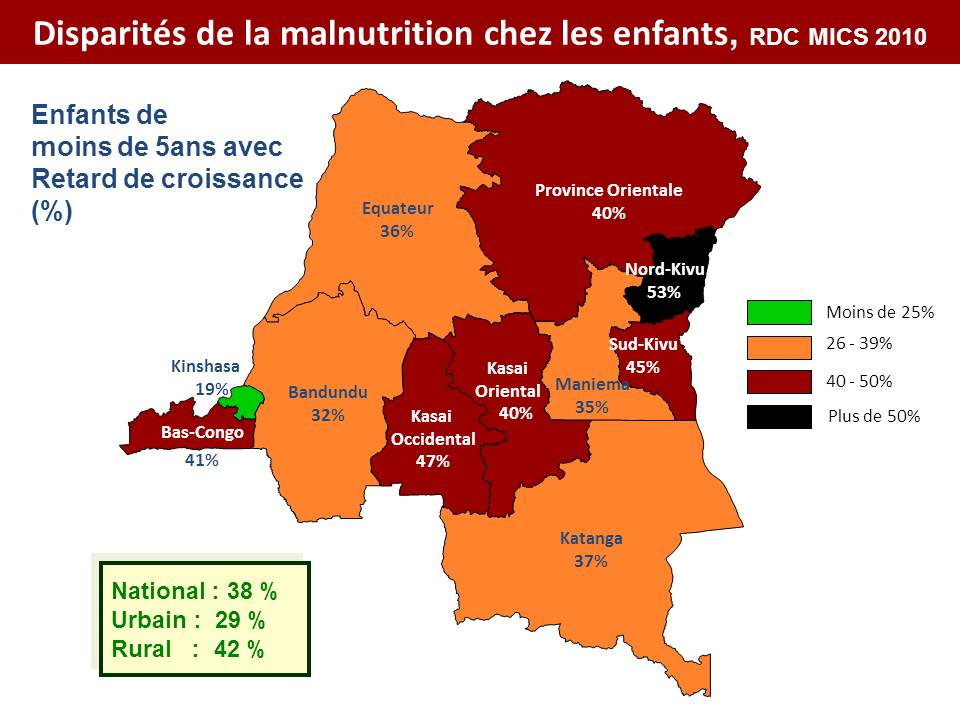
UNDERNUTRITION AND CHILD MORTALITY
Despite recent improvements, child mortality remains high with a national under five mortality rate of 158 per 1000 live births (MICS 2010). One in every 6 children in Democratic Republic of Congo (DRC) dies before its fifth birthday. Undernutrition accounts for 45% all children deaths per year and 11% of the total global disease burden among children under 5 years (The Lancet 2013), and therefore severely limits the development of individuals and the country.
ACUTE MALNUTRITION
Over the last decade, the prevalence of acute malnutrition has significantly decreased from 16 % in 2001 to 11 % in 2010 (MICS 2010). Despite this improvement the rates of acute malnutrition still remain high and translate every year into nearly 2 million children being severely affected. The Multiple indicator cluster survey (MICS) completed in 2010 shows that provinces in the western and central part of the country (Kasai Occidental, Kasai Oriental, Bandundu and Equateur) are the most affected by both global acute malnutrition and severe acute malnutrition.
WASTING
Democratic Republic of Congo (DRC) is one of the ten countries which accounts for 60% of the global burden of wasting in children under 5 years old (UNICEF 2012 Report). While wasting rates are high even during ‘normal’ years, in times of stress, wasting rates rise to alarmingly high levels and regularly exceed emergency thresholds.
CHRONIC MALNUTRITION
Chronic malnutrition is also of serious concern in RDC, as over the past decade, its prevalence has remained high and unchanged. Over 43% of children under five are stunted (chronically malnourished) in DRC. Democratic Republic of Congo (DRC)ranked as 8th highest in the world for rates of stunting, contributing to 3.5% of the global total of stunted children. Stark geographical inequalities exist within the country, with Province Orientale, Nord Kivu, Katanga, Kasai Occidental and Kasai Oriental experiencing the highest stunting rates.
ANAEMIA AND DEFICIENCIES
Anaemia affects 71% of children under 5 years of age and 53% of women of reproductive age (DHS 2007). Besides low iron intake from the diet, anaemia also results from infections such as malaria and intestinal worms. According to a survey conducted in 1998 by the national nutrition programme (PRONANUT), 61 % of children aged 6 to 36 months were suffering from sub-clinical to clinical vitamin A deficiency. Iodine deficiency remains a public health issue in DRC as every other new-born is unprotected against brain damage consecutive to iodine deficiency during pregnancy.

Source: Pona Bana
 FR
FR EN
EN AR
AR








